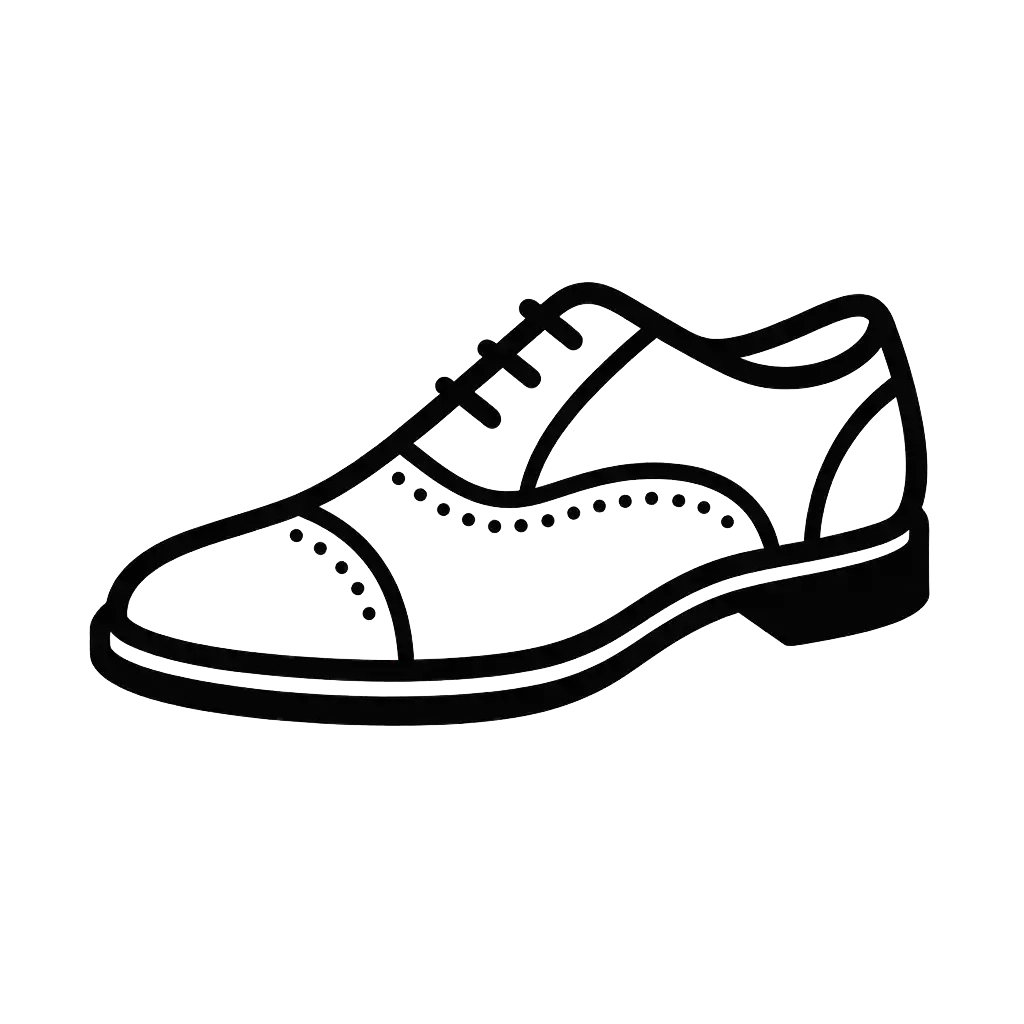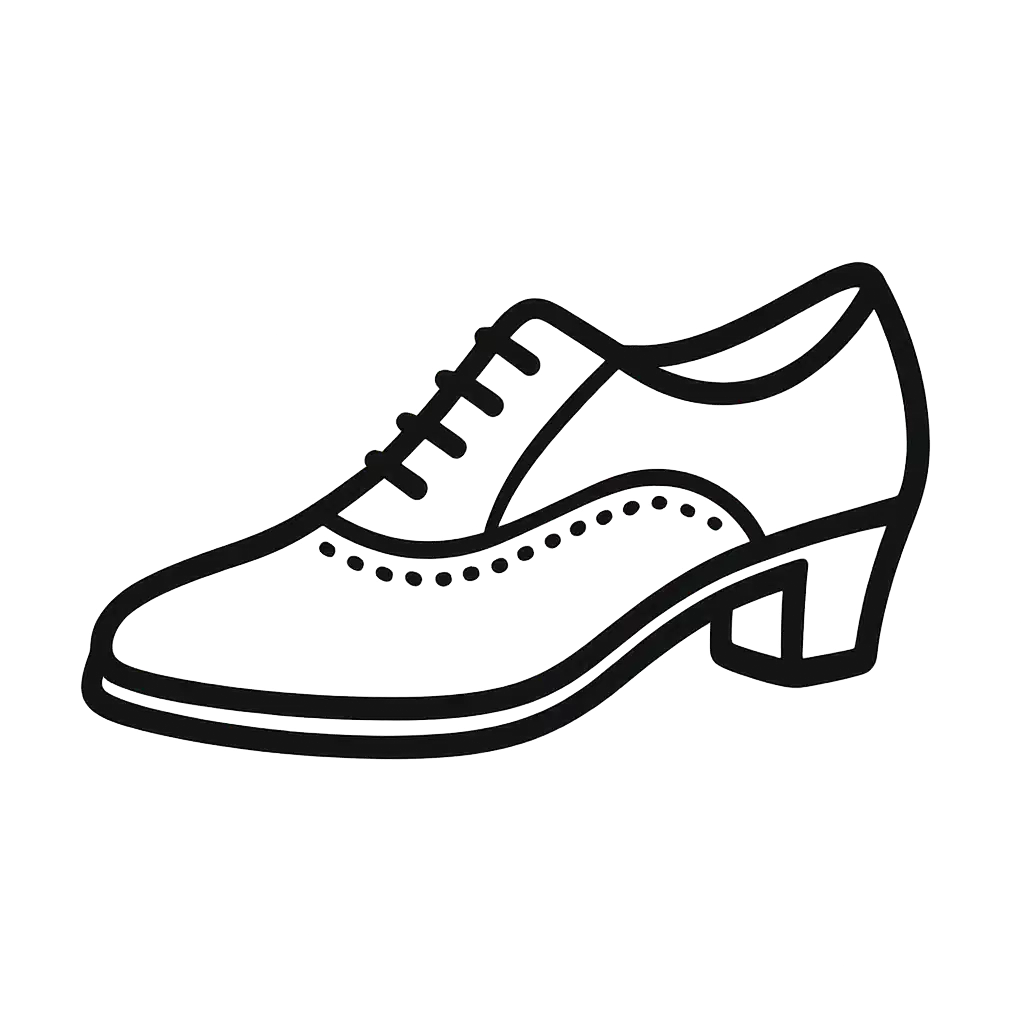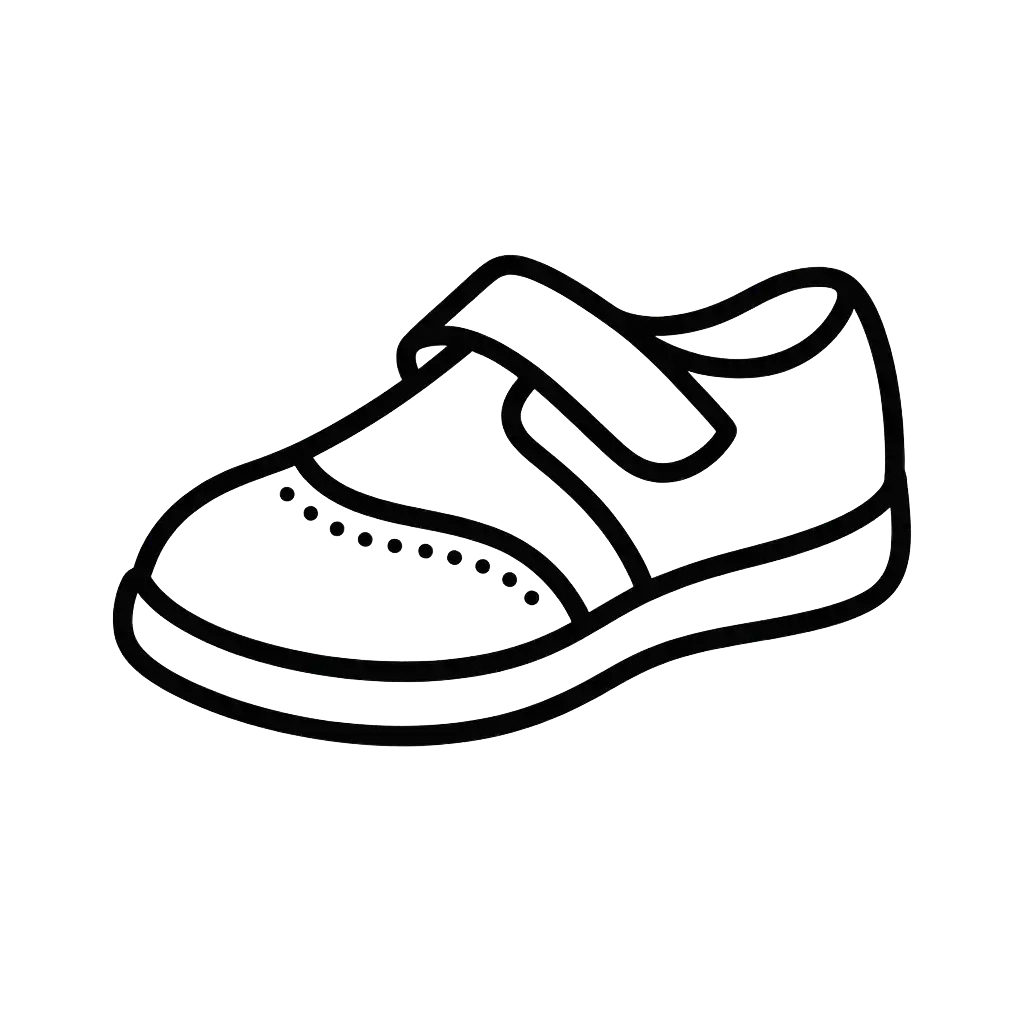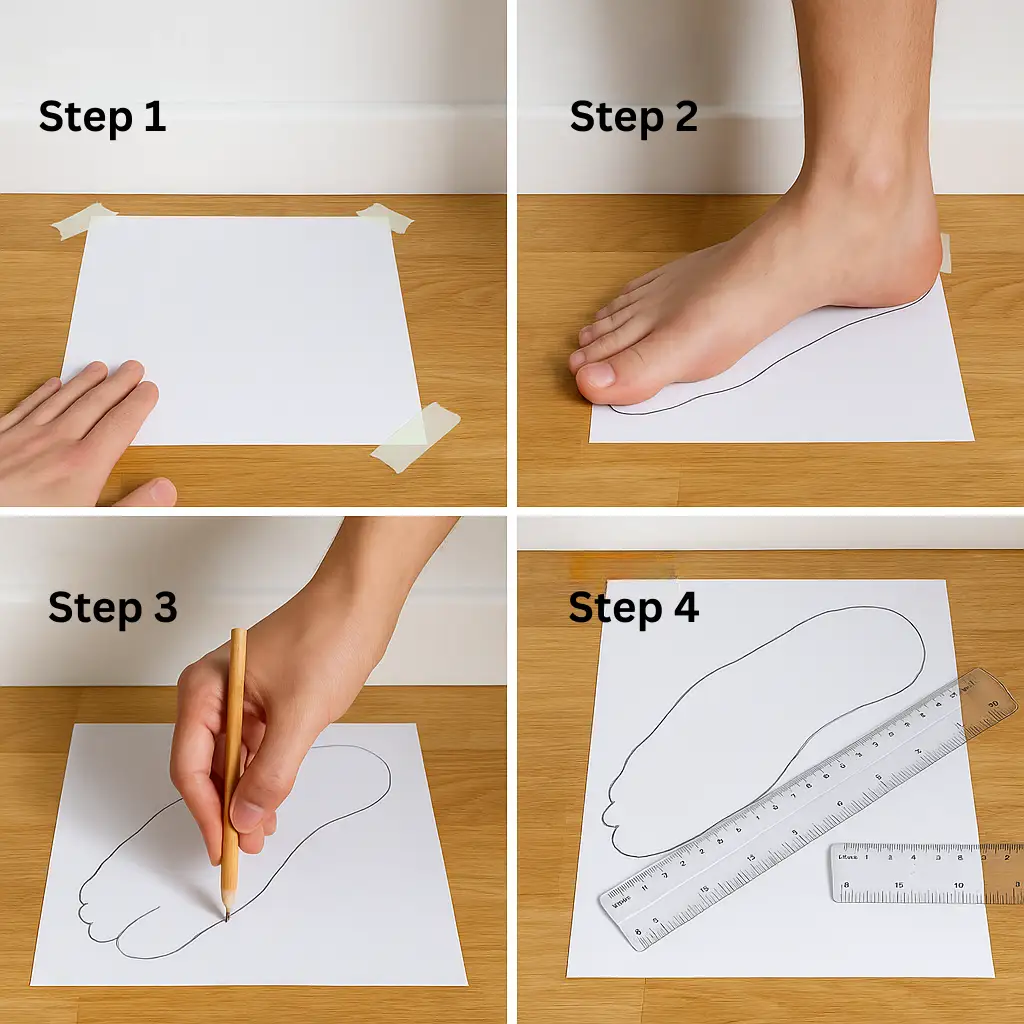Free Shoe Size Converter & Conversion Charts
Look at our shoe size conversion charts for Men, Women and Kids

Shoe Size Calculator
Here at Shoe Size Converter, we have crafted a tool to make it easy for people to find their perfect shoe size, whether your size is in UK, US, EU, CM, or Japanese. To use the tool, enter any shoe size below and convert it into any of the other sizing systems. Brand-specific sizing information is provided below as well.
Free Online Shoe Size Converter
Try Our Shoe-Size Conversion Tool
Isn’t it annoying when you try to order shoes for yourself and your loved ones from a specific brand or country? Whether you’re travelling or buying online, it causes confusion and frustration because you don’t know which size to select. When was the last time you ordered shoes and they actually arrived in the right size? In your frustration, you have to return them and wait several days for the correct pair.
When you shop online for shoes, you often face disappointment instead of finding the perfect pair. You may fear buying shoes internationally or online, waste money, endure the hassle of returns, and feel limited in your options because of uncertainty. Furthermore, online sources aren’t always legitimate, and many charts can be confusing or misleading. This misinformation often leads users to question the authenticity of what they find.
No worries, this is the best shoe-size guide and converter you’ll ever find. Here at Shoe Size Converter, our hardworking team has crafted an easy-to-use resource guide complete with a special tool made just for you. We promise clear explanations, reliable charts, and expert tips to help you confidently find your perfect fit every time, no matter where you’re shopping. You won’t have to worry about the old-school problems of finding the right size ever again.
Understanding the Major International Shoe Sizing Systems
You might wonder why all these shoe-sizing systems exist. Why wasn’t a single metric for measuring shoe sizes invented? It would be much easier for the general public to find the perfect fit if one system were used worldwide. The answer lies in history as different systems developed independently in various regions and sometimes measure different dimensions or use different starting points and units.
US Sizing:
US shoe sizing was historically measured in barleycorn measurement with variations, this was an ancient way of measuring shoes and finding shoe sizes. This method was created with variations and there were differences in measuring men, women, and kids shoe sizes.
UK Sizing:
Same as US shoe sizing, UK sizing was also based on the barleycorn measurement system. Both UK and US shoe sizing methods were the same with minor differences.
European (EU) Sizing:
EU sizing was measured differently from other metrics. This system was based primarily on the Parisian point system, a unique method invented in the 1800s by French shoemakers.The Parisian point system is a shoe‐sizing scale in which each point equals 2⁄3 of a centimetre (about 6.67 mm).
Japanese (CM) Sizing:
On the simpler side the Japanese used to measure and still measure their shoe sizes in centimeters, which is often considered more straightforward.
Other Systems:
Other systems include less commonly used shoe sizing systems, such as Canadian and Australian sizes, which aren’t as similar to US or UK sizes. These will be covered later in the chart provided to you.
Comprehensive Shoe Size Conversion Tables
Here at Shoe Size Converter, we provide nearly accurate shoe-sizing charts and intuitive conversion tools to ensure you’ll never order the wrong pair again or be left confused. These charts should be used as general guidelines rather than definitive rules, as shoe sizes can vary across brands.
Our team is responsible for creating these industry-standard, universal charts for every foot size. We spend days and often months crafting, verifying, and testing them based on averages across various shoe brands, including all major labels, to provide accurate shoe-size comparisons around the world.
Men’s Conversion Chart

Women’s Conversion Chart

Kid’s Conversion Chart

Men’s Shoe Sizing Charts
Find your perfect fit across different sizing systems
| US | UK | Europe | Australia | Foot Length (cm) | Foot Length (mm) | Japan (cm) |
|---|---|---|---|---|---|---|
| 6 | 5 | 38 | 5 | 23.5 | 235 | 23.5 |
| 6.5 | 5.5 | 38.5 | 5.5 | 24 | 240 | 24 |
| 7 | 6 | 39 | 6 | 24.5 | 245 | 24.5 |
| 7.5 | 6.5 | 40 | 6.5 | 25 | 250 | 25 |
| 8 | 7 | 41 | 7 | 25.5 | 255 | 25.5 |
| 8.5 | 7.5 | 42 | 7.5 | 26 | 260 | 26 |
| 9 | 8 | 43 | 8 | 27 | 270 | 27 |
| 9.5 | 8.5 | 43.5 | 8.5 | 27.5 | 275 | 27.5 |
| 10 | 9 | 44 | 9 | 28 | 280 | 28 |
| 10.5 | 9.5 | 44.5 | 9.5 | 28.5 | 285 | 28.5 |
| 11 | 10 | 45 | 10 | 29 | 290 | 29 |
| 11.5 | 10.5 | 45.5 | 10.5 | 29.5 | 295 | 29.5 |
| 12 | 11 | 46 | 11 | 30 | 300 | 30 |
| 13 | 12 | 47 | 12 | 31 | 310 | 31 |
| 14 | 13 | 48 | 13 | 32 | 320 | 32 |
Women’s Shoe Sizing Charts
Find your perfect fit across different sizing systems
| US | UK | Europe | Australia | China | Japan (cm) |
|---|---|---|---|---|---|
| 5 | 2.5 | 35 | 3.5 | 35.5 | 21 |
| 6 | 3.5 | 36 | 4.5 | 37 | 22 |
| 6.5 | 4 | 37 | 5 | 38 | 22.5 |
| 7.5 | 5 | 38 | 6 | 39 | 23.5 |
| 8.5 | 6 | 39 | 7 | 40 | 24.5 |
| 9 | 6 | 40 | 7.5 | 41 | 25 |
| 9.5 | 7 | 41 | 8 | 42 | 25.5 |
| 10 | 7.5 | 42 | 8.5 | 43 | 26 |
| 10.5 | 8 | 43 | 9 | 44 | 27 |
Kids, Youth & Toddler Shoe Size Chart
Find the perfect fit across all children’s age groups
| Category | US | UK | EU | CM | Inches |
|---|---|---|---|---|---|
| Toddler | 4 | 3 | 19 | 11.4 | 4.5″ |
| Toddler | 5 | 4 | 20 | 12 | 4.75″ |
| Toddler | 6 | 5 | 22 | 13 | 5.125″ |
| Toddler | 7 | 6 | 23 | 14 | 5.5″ |
| Kids | 8 | 7 | 24 | 14.6 | 5.75″ |
| Kids | 9 | 8 | 25 | 15.2 | 6″ |
| Kids | 10 | 9 | 27 | 16 | 6.25″ |
| Kids | 11 | 10 | 28 | 16.8 | 6.625″ |
| Youth | 12 | 11 | 30 | 17.6 | 6.875″ |
| Youth | 13 | 12 | 31 | 18.4 | 7.25″ |
| Youth | 1 | 13 | 32 | 19.1 | 7.5″ |
| Youth | 2 | 1 | 33 | 19.7 | 7.75″ |
| Youth | 3 | 2 | 34 | 20.3 | 8″ |
| Youth | 4 | 3 | 36 | 21 | 8.25″ |
| Youth | 5 | 4 | 37 | 21.6 | 8.5″ |
| Youth | 6 | 5 | 38 | 22.2 | 8.75″ |
How to Accurately Measure Your Foot at Home
If shoe-sizing charts exist, why should we measure our feet at home or double-check our shoe size? The answer lies in the fact that people often encounter fitting problems even after confirming they’ve bought the right pair. The same happened to me: I ordered a size 42 EU shoe, convinced it was the correct size—and yet it didn’t fit. Mishaps like these happen frequently when shopping for shoes online. Therefore, it’s important to measure our feet and verify our shoe size, even when we feel certain.
Materials needed:
1) Paper
2) Pencil
3) ruler/measuring tape
4) tape
Step-by-Step Guide
Step 1: Prepare the surface (tape paper to floor near a wall).
Step 2: Sit with your foot flat on paper, heel against wall.
Step 3: Trace the outline of your foot. Keep the pencil perpendicular.
Step 4: Place your foot flat on a ruler or tape measure and record two measurements, length (heel to longest toe) and width (across the widest part of the ball of your foot). Repeat on your other foot and note both sets of measurements.
Expert Tips:
1) Measure at the end of the day.
2) Measure both feet and use the larger size.
3) Wear the socks you plan to wear with the shoes.

Using the Conversion Charts and Factors Affecting Fit
How to Use the Charts?
Many people still have questions and feel confused when using a size chart to find their perfect shoe size. Even after properly measuring and confirming their size, some people still end up with a pair that doesn’t fit when it arrives from an online order.To find the perfect size using the charts above, locate your measured size in one column and look across to find its equivalent in another system. If your measurement falls between two sizes, it’s always best to size up.
Common Pitfalls & How to Avoid Them:
- Don’t always measure one foot.
- Not accounting for socks.
- Assuming conversions are exact for every brand/shoe.
- And ignoring shoe width (which most people forget).
First, you’ll need to check the shoe width for an accurate fit. For example, in the US you’ll see designations like B for narrow and E or EE for wide. However, be aware that these widths aren’t consistent across international sizing systems. A “D” in one manufacturer’s chart might feel roomier or tighter than a “D” in another’s. Always compare the charts side by side, because the shoe won’t fit properly if it’s too loose or pinches.
Next is the shoe last (the mold on which the entire shoe is constructed), which varies from one model to another and often depends on the shoe type. For example, two pairs of size 9 shoes can have different shapes due to variations in the lasting process. Leather shoes tend to stretch and conform over time, whereas most synthetic materials remain more rigid.
Lastly, shoes also fit according to their intended use. Running shoes, for example, require extra toe room for shock absorption and forward motion. Dress shoes fit more snugly, while sandals leave open areas that rely on secure straps. Many boots, meanwhile, fit differently around the ankle and toe.
Brand-Specific Sizing:
Although many sizing charts are available online, popular brands often have unique sizing quirks. Each brand’s sizing and mold design varies. Here’s a dropdown for every shoe size from each major brand, so you don’t have to worry about ordering the wrong size ever again.
Brand Sizing Guide
Essential sizing notes for major footwear brands
Advanced Considerations and Expert Advice
For a more accurate measurement of your shoe size, try this nifty trick: women’s shoe sizes run about 1.5 sizes smaller than men’s. To convert a woman’s size to its men’s equivalent, simply subtract 1.5.
US and UK shoe sizes often include half sizes (e.g., 8.5, 9), while European sizes usually increase in whole numbers (39, 40, 41). If a conversion chart suggests a size like “39.3,” first check the brand’s own sizing guide—some brands offer 39.5, others do not. If no specific chart is available, it’s generally safer to round up to the next full size to avoid pinched toes, particularly in laced styles; adding a gel or foam insole can also fill any excess space. When ordering online, you might order both the next smaller and larger EU sizes to compare fits and return the pair that doesn’t work. For slip-on styles such as loafers or flats, however, rounding down often ensures a snugger fit and prevents slipping.
Here’s a piece of advice from our footwear expert, Andrew Nick, who always says: ‘Shoes should feel like a natural extension of your foot, secure without constricting.
There are also several other ways to measure your shoe size, using fitting guides and tools like the Brannock device in stores, for maximum accuracy. However, when ordering shoes online, we recommend measuring at home as described above for your convenience.
Why Our Converter Is The Best?
Here at the Shoe Size Converter, we provide charts, tools, and a wide range of measurements right on our site. Rest assured, by trusting us, you’ll never end up with the wrong size again, sparing yourself a major hassle. We recommend bookmarking our site so you never order the wrong pair in the future. For authenticity, my team and I are constantly updating our shoe size database so you’ll always find the perfect fit.
Frequently Asked Questions
What sizing systems do we support?
Our shoe‑size converter supports all the major measurement systems in one streamlined tool: US sizes for men, women, and kids; UK sizes for men, women, and kids; unisex EU sizing; Japanese sizing in whole centimeters; and direct foot‑length input in centimeters (CM).
Where does each conversion table come from?
We keep things simple and accurate by pulling from two places, our standard chart comes straight from British ISO and British branding size guides. While our brand specific charts (like Nike, Adidas, Puma, etc.), we swap in their own published size tables so you’re getting the exact numbers they use.
How are half‑sizes handled?
All base tables include half‑sizes (e.g. 8.5). We interpolate linearly between adjacent whole‑size entries for any decimals beyond .5
How do men’s, women’s and kids’ sizes differ?
Men’s, women’s, and kids’ sizes each follow their own scale so you get the best fit: women’s sizes generally run about 1.5 US sizes smaller than men’s (so a women’s 8 is roughly a men’s 6.5), while kids’ sizes cover youth sizes up to US 7 and then switch to an infant‑style chart (based on foot length in centimeters) for anything under US 1.
Are the conversion charts regularly updated?
Yes, our Standard tables are reviewed every quarter against the latest ISO and British Standards releases, and whenever a brand such as Nike, Adidas, or Puma publishes new sizing data we integrate those changes immediately, update the version, and rebuild the cache so you always see the most current guidance.